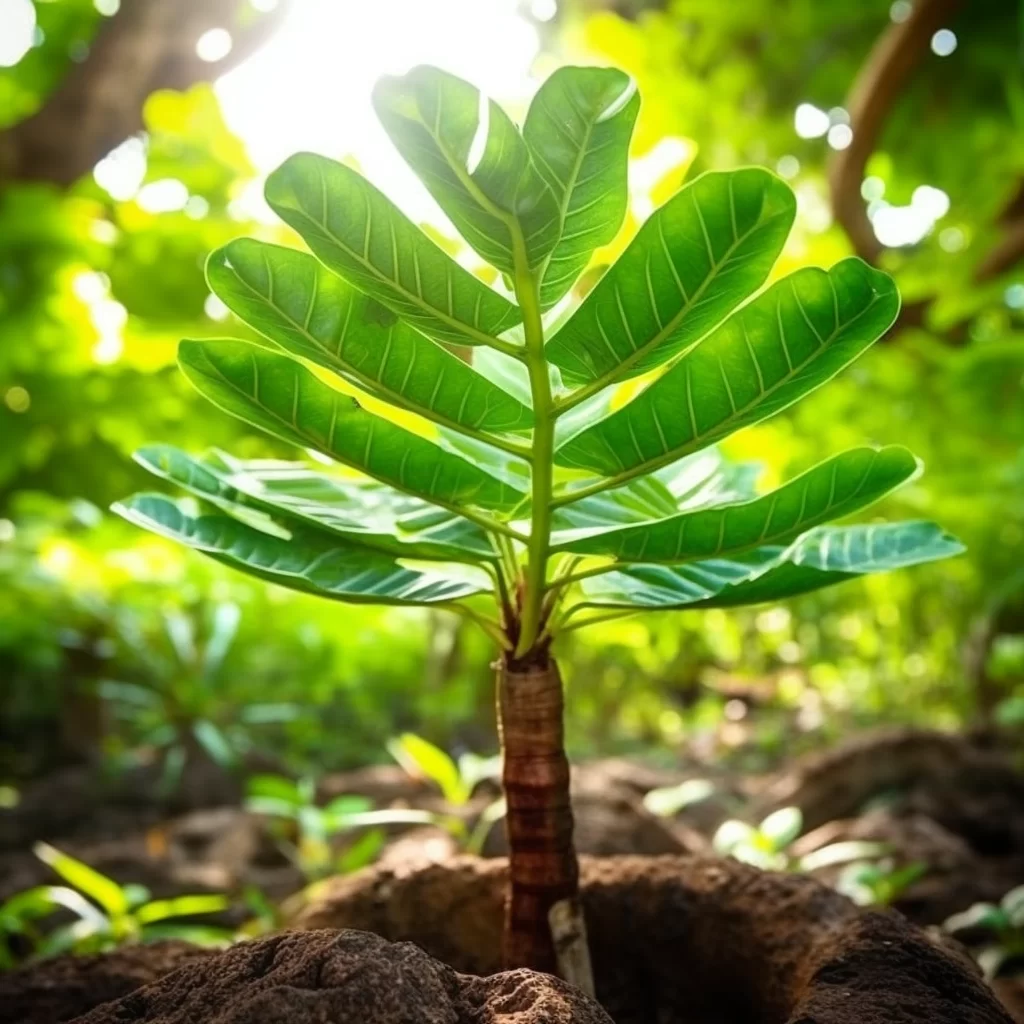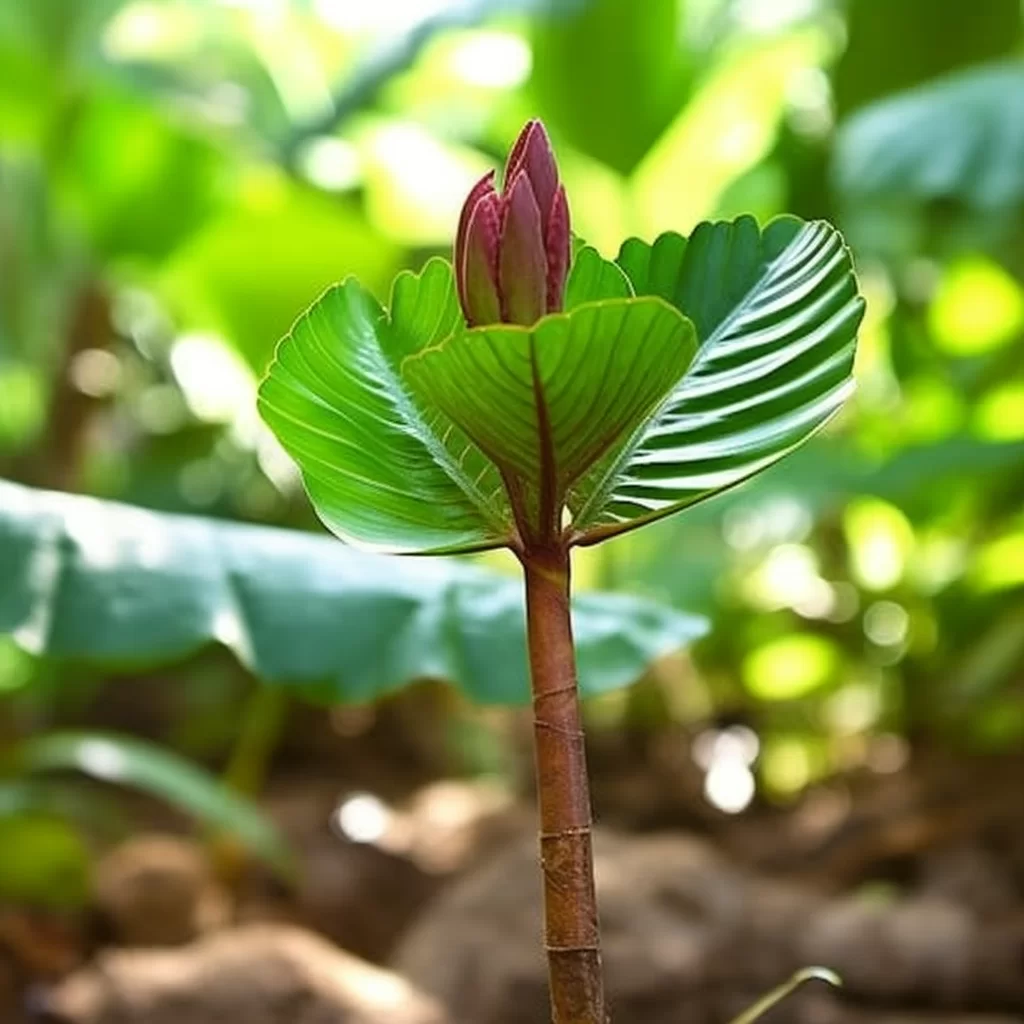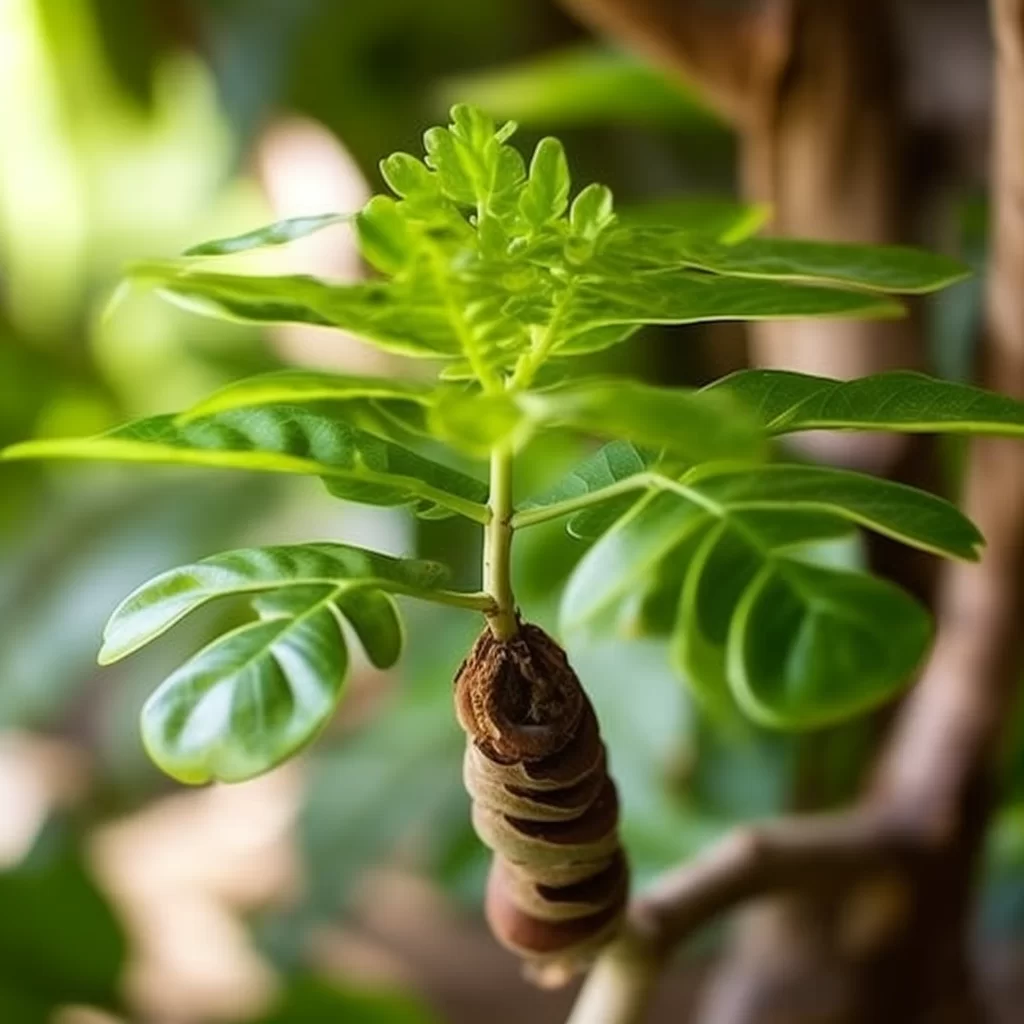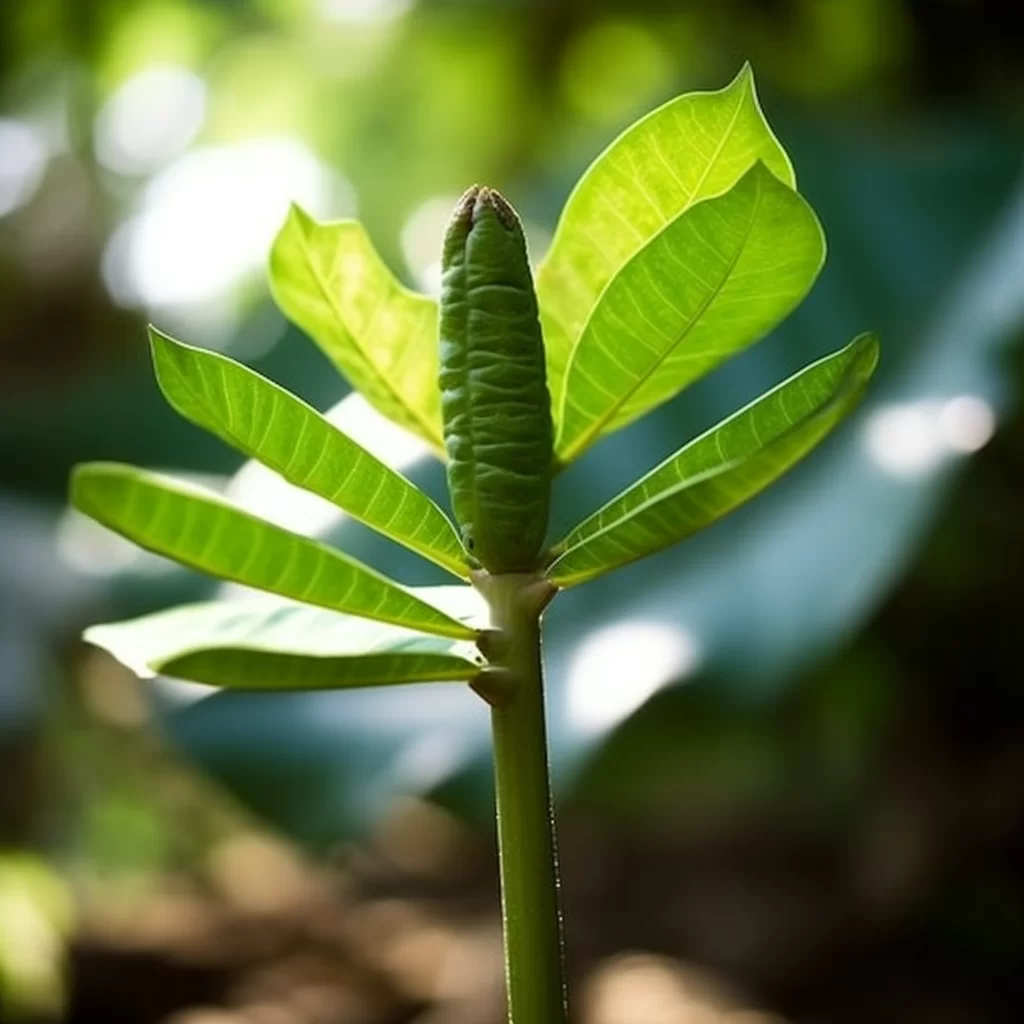Story of Day :
Contents
The Tamarind Plant: A Complete Guide and Care Tips
If you’re someone who loves to add unique and exotic plants to your backyard garden, then the tamarind plant could be a perfect choice for you.
This plant not only delivers delicious fruits but also possesses several medicinal properties that can benefit your overall health.
From improving digestion to treating fever or helping with sore throat- the fruit of this tree has been used in traditional medicine for ages.
In fact, it’s so versatile that it’s even used as a popular ingredient in many cuisines worldwide.To care for this beautiful tree, one must provide it with well-draining soil and regular watering during dry spells.
With proper nurturing, the tamarind plant can grow up to 80 feet tall! If you’re interested in adding some tropical flair to your garden and enjoy the benefits of an ancient healing fruit- then definitely consider planting a tamarind tree right away! In conclusion, the tamarind is an exotic addition that will not just enhance the beauty of any outdoor space but also provide several health benefits for those willing to try them out.
Whether you’re looking forward to using its fruits in cooking or want natural remedies at hand – this hardy tree is worth exploring.
So why wait? Get started with planting these remarkable trees today!
What is a Tamarind Plant?

The tamarind tree is a tropical plant that originally hails from Africa but has since been found in other regions such as India, South Asia, and Mexico.
It’s one of those versatile trees that can thrive in warm temperatures and adapt to different climates.
The tamarind tree belongs to the Fabaceae family, which is a group of flowering plants commonly known as legumes or beans.
In the wild, it can grow up to 80 feet tall, making it an impressive sight for nature lovers.Aside from its size and adaptability, the tamarind tree also holds many benefits for humans.
Its fruit is widely used in cooking and adds a sweet-sour flavor to dishes such as chutneys and curries.
The bark of the tree contains medicinal properties that are used in traditional medicine for treating various ailments like fever and diarrhea.
Additionally, its wood is durable and resilient to pests like termites making it ideal for construction purposes.
Overall, the tamarind tree’s versatility makes it a valuable resource not just in its native Africa but also across the world where its benefits are appreciated by many cultures.
The tree is known for its production of brown pods, and while they may not be visually striking, they contain a hidden treasure trove of deliciousness.
Within the pods lies pulp that surrounds small seeds, and it’s this pulp that has chefs salivating.
The taste is sour at first, akin to lemons or vinegar, but it quickly changes to a sweet aftertaste that leaves you wanting more.
This unique flavor profile makes the pulp highly sought after by cooks who use it as an ingredient in many savory dishes like chutneys, curries, or stews.
It’s not hard to see why this fruit has become a favorite among culinary enthusiasts. The brown pod-producing tree is truly one-of-a-kind because of its versatile fruit that can take any dish from ordinary to extraordinary.
The brown pod-producing tree is truly one-of-a-kind because of its versatile fruit that can take any dish from ordinary to extraordinary.
The edible pulp within each pod exudes sour notes at first but evolves into a pleasant sweetness afterward.
This flavor combination brings depth to savory dishes like curries and stews while balancing out the richness of other ingredients used in these meals.
Chefs love experimenting with this ingredient because there seems to be no end to what can be created with it! From mouthwatering chutneys to hearty soups – everything tastes better with this amazing fruit as part of the recipe!
Benefits of Growing Tamarind Plants
- Provides shade: As mentioned before, tamarinds can grow quite tall so they’re perfect for providing shade on hot summer days.
- Ornamental value: With its beautiful foliage and pink flowers that bloom from April through September (depending on location), the tamarind tree makes an excellent ornamental plant.
- Fruit production: Of course, one of the primary benefits of growing a tamarind plant is its fruit production!
- Medicinal properties: In traditional medicine practices around the world – from Ayurveda in India all the way to Latin America – different parts of this versatile tree are known for their medicinal properties regarding stomach issues, inflammation, and fever reduction.
How to Care for Tamarind Plants

If you’re looking for a low-maintenance plant that can still add some greenery to your home or garden, tamarind trees might be just what you need.
While they don’t require constant attention, there are a few things you should keep in mind if you want them to thrive.
First and foremost, make sure your tamarind tree gets enough sunlight – they prefer full sun and won’t do well in shade.
Additionally, regular watering is important to keep the soil moist but not waterlogged.
It’s also a good idea to periodically fertilize your tree with a balanced fertilizer to provide the nutrients it needs.Overall, taking care of tamarind trees isn’t too complicated as long as you give them the right conditions.
However, neglecting their needs could lead to stunted growth or even death of the plant.
If you’re willing to put in some minimal effort, these trees can reward you with beautiful foliage and possibly even tasty fruits! So why not give it a try?
Location and Soil
If you want to grow tamarinds, it is essential to provide them with full sun exposure.
These trees thrive in warm and sunny regions, where they can soak up the maximum amount of sunlight possible.
However, if you reside in an area with harsh winter climates that can damage your plant, it is important to plant your tamarind tree in a protected spot.
This way, the tree can still receive ample sunlight during daylight hours while being sheltered from harsh winds and frosty temperatures. Tamarinds are fascinating fruit trees that require specific growing conditions to flourish.
Tamarinds are fascinating fruit trees that require specific growing conditions to flourish.
If you’re planning on adding one of these exotic plants to your garden or orchard, be sure to offer them an optimal environment for growth by providing full sun exposure.
For those living in colder regions with challenging weather patterns during winter months, it’s crucial to designate a secure location where the tree can still get enough sunlight without being exposed directly to harsh elements that might harm its development.
With proper care and attention paid towards their specific needs, tamarinds will reward you with delicious fruits that are both sweet and sour at the same time!
If you’re planning on growing tamarinds, it’s important to pay attention to the quality of the soil.
They thrive in well-draining soil that’s rich in organic matter.
This means that the soil should have good porosity, allowing water to flow through easily without getting too saturated.
Additionally, adding organic matter like compost or manure can help improve the nutrient content and overall health of the soil.
It’s also worth noting that tamarinds prefer slightly acidic soils with a pH level between 5.5 and 7.0.
Keeping these factors in mind will give your tamarind tree a solid foundation for healthy growth.To ensure a successful harvest of juicy tamarinds, it’s essential to create an optimal environment for them to grow in – starting with their preferred type of soil! The ideal conditions include well-draining earth and plenty of organic matter such as compost which boosts nutrient levels within your garden bed or potting mix environment – essential for healthy tree development over time! The trees love slightly acidic soils with pH levels ranging from around 5.5 to 7 – this is key knowledge when planting them so they can establish themselves properly and grow strong roots into this prime growing medium that will ultimately provide nourishment for fruit production down-the-line!
Watering
If you have tamarind plants, you might be wondering how often to water them.
Well, the good news is that they don’t need frequent watering.
You only need to water them when the top layer of soil is dry.
This means that you don’t have to worry about watering them daily or even weekly! One thing to keep in mind though is that tamarinds are not fond of soggy conditions, so it’s essential not to overwater them as this can lead to root rot and damage the plant.In summary, if you want your tamarind plants healthy and thriving, remember not to overwater them but make sure they receive sufficient water when needed.
Checking the top layer of soil for dryness every few days should help you determine when it’s time for a drink.
With proper care and maintenance, your tamarinds will grow vigorously without any moisture-related problems!
Fertilization
If you’re looking for a natural and effective way to give your trees a boost, consider fertilizing with composted organic matter or manure.
This method involves adding nutrient-rich materials around the base of the tree every six months or so, which can help improve soil quality and promote healthy growth.
Composting is an environmentally-friendly way to recycle food scraps and yard waste into a valuable soil amendment that can provide essential nutrients to your trees.
Manure is another option that has been used for centuries as a natural fertilizer due to its high levels of nitrogen, phosphorus, and potassium.
By using these natural methods instead of synthetic fertilizers, you can support the health of your trees while also reducing your environmental impact.By regularly adding composted organic matter or manure to the base of your trees, you are not only providing essential nutrients but also helping to create healthier soil overall.
The addition of these materials can improve soil structure by increasing water-holding capacity and enhancing drainage.
Good soil structure is important because it allows air and water to flow more easily through the root zone, promoting better uptake of nutrients by plants.
Additionally, using natural fertilizers like compost or manure helps support beneficial microbes in the soil that are vital for breaking down organic matter into plant-available forms.
Overall, this simple yet effective method of tree care offers numerous benefits both for your plants and for the environment as a whole!
Tamarind plants are not immune to pests and diseases, which can lead to the stunted growth of the plant or even death.
One of the most common pests that affect tamarind plants is caterpillars.
These tiny creatures feed on leaves, which can lead to stunted growth if left unchecked.
To deal with caterpillars, it is recommended that you use Bacillus thuringiensis-based insecticides, which can be found at most garden centers.Another pest that affects tamarind plants is fruit borers.
These insects eat into ripening fruits and cause irreparable damage.
If you notice damaged fruit on your tamarind plant, it is important to prune immediately using sterilized pruning shears.
This will prevent further damage from occurring and help your plant grow healthily again.
Lastly, scales are a tiny insect that attaches themselves onto leaves or bark sucking sap from their host leading to color change in affected areas of the plant tissue; they’re difficult to notice until there’s a noticeable color change caused by them- use insecticidal soap sprays that suffocate scales without risking other beneficial insects in your garden or landscape area where these trees are grown commonly seen as ornamental trees due their beautiful foliage and exotic look making gardens more attractive among homeowners who love gardening as hobby or profession alike!
Harvesting Tamarind Fruits
Tamarind fruits are usually ripe and ready for harvest from November to February, depending on the area or region where they grow.
To determine if a tamarind fruit is ready for picking, simply check its color.
When the fruit turns brown and brittle, it’s a sign that it’s now mature enough to be harvested.
Moreover, harvesting tamarind fruits is quite easy as they can be easily detached from the tree with just a slight twist of your hand.Harvesting tamarind fruits can be an enjoyable and rewarding experience because of their unique taste and health benefits.
The best time to pick these fruits depends on several factors such as climate conditions and location.
If you’re lucky enough to have tamarind trees in your backyard or garden, you can easily monitor its ripening progress by observing changes in its color- from greenish-brown to brown before plucking them off with ease using just one hand! By mastering this simple technique of harvesting ripe Tamarinds at home or even on an orchard farm, one could enjoy not only the succulent sweet-sour taste but also benefit from their vitamins and minerals like; thiamine (B1), riboflavin (B2), niacin (B3), vitamin C & E while promoting better digestion too!
Tamarind is a popular ingredient in many dishes, especially those from Asian and Latin American cuisines.
However, preparing it for cooking can be a bit of a hassle due to the seeds and strings found inside the fruit.
Fortunately, there are now tools available online that make this process much easier! With these convenient tools, you can quickly remove all the unwanted parts of tamarind so you can start enjoying its delicious flavor without any fuss.Whether you’re making a savory curry or a sweet chutney, removing tamarind seeds and strings is an essential step in cooking with this ingredient.
But don’t let this task deter you from experimenting with new recipes – with the help of these handy tools available online, preparing tamarind has never been simpler! So go ahead and indulge in your culinary cravings with confidence knowing that prepping your tamarind won’t take up too much time or effort thanks to these useful gadgets!
Conclusion
The tamarind plant is a stunning addition to any garden.
Its lush green leaves and delicate pink flowers make it an eye-catching sight that will be sure to enhance the beauty of your outdoor space.
Furthermore, this plant provides plenty of benefits that go beyond aesthetics alone.
Tamarind trees produce edible fruit that can be used in cooking, as well as having medicinal properties such as aiding digestion and improving heart health.
Additionally, their dense foliage makes them an excellent source of shade on hot summer days – perfect for relaxing outdoors without being directly exposed to the sun’s rays.If you’re interested in growing tamarind plants yourself, then fear not! With our guide on proper care tips, you’ll be able to cultivate these unique trees with ease.
From ideal soil conditions and watering requirements through to pruning techniques and pest control measures – we’ve got you covered! Whether you’re a seasoned gardener or just starting out, our expert advice will ensure that your tamarind tree thrives in no time at all.
So why not give it a go today? Your garden (and taste buds) will thank you for it!